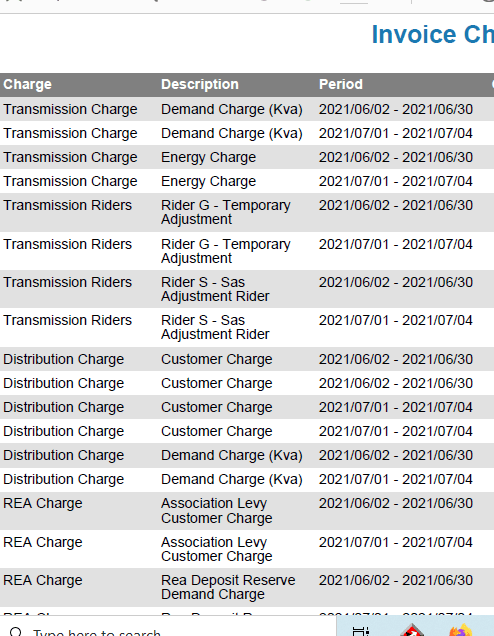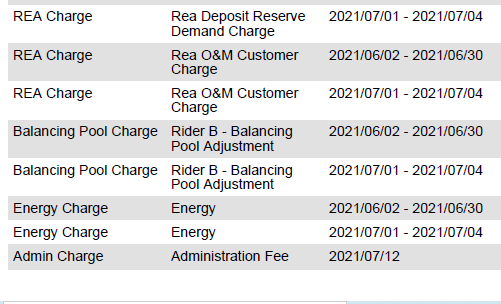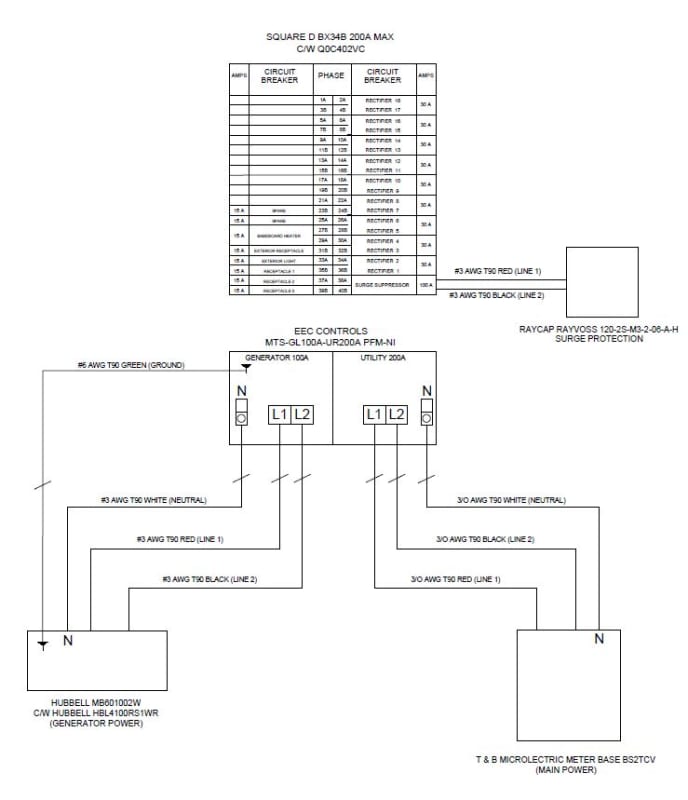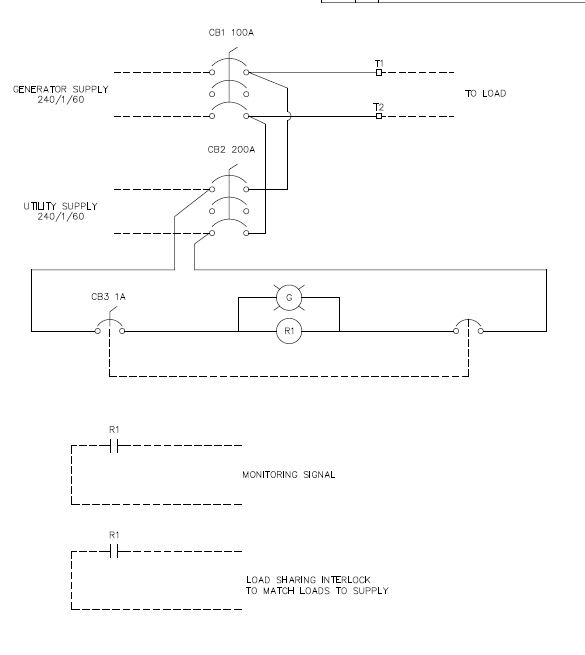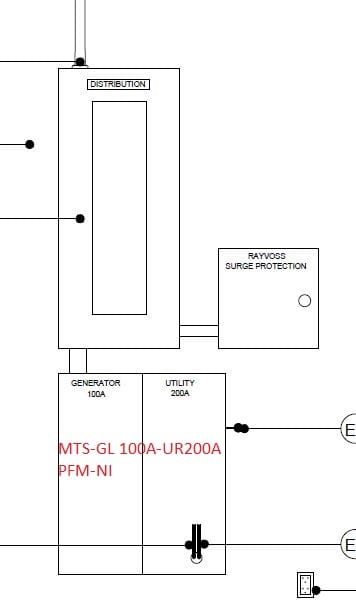All good points Keith, but the local economics are crazy.
I have been meaning to call customer service to try to get a tripping curve for the breaker, but the breaker has never tripped. our previous place was similar and the breaker tripped once in about ten years.
I suspect that the breaker will pass more than 35 Amps before tripping.
Billing, revenue, etc.
Why the breaker? We are on a limited demand tariff. We are on a 5 KVA max demand rate. The 35 Amp breaker lets through a little over 8 KVA.
On rural lines, the demand is a big factor.
As for wind and solar, the numbers are pretty bad. With de-regulation and the separation of energy production from energy delivery, we don't pay very much for energy.
Our fixed charges run over $100 per month.
Here is a screen shot of some invoices:
It gets better;
The utility only pays wholesale rates for produced energy.
The wholesale rate is about 25% of the retail rate.
During the day you can replace your consumption with solar, but you must also bank four times the night time energy usage to break even on consumption.
So by a WAG, let's use 50% day time and 50% night time for 171 KWHrs and $10.52 energy charges.
171KWHrs/2 = 85.5 KWHrs of solar will replace daytime usage and save $5.26 per month.
171KWHrs/2 = 85.5 KWHrs x 4 = 342 KWHrs of solar will replace nighttime usage and save $5.26 per month.
Other charges and taxes = ($92.14 + $7.50 + $5.51 = $105.15)
At $5.26 for 85.5 KWHrs that will take an additional 1709 KWHrs.
That's a total of 2136 KWHrs to offset the total charges for 171 KWHrs consumption.
2136 KWHrs per 30 Days = 712 KWHrs per day. Wag 10 hours average solar production per day = 71.2 KW average output.
BUT
There is a 50 KW limit on solar production.
By the way, the government claims to be in favour of alternate energy production.
Looking this over, your questions were really good, Keith. It's the answers that are really cruddy.
Spar may be on a different tariff than I. I never asked him.
I know a man who got into solar early and has a contract at reasonable rates.
His 50 KW installation has paid for itself and is putting money in his bank account every month.
Those contracts are no longer available.
Here are some of our monthly charges. There was a slight rate adjustment on one of the charges so all the entries are doubled, once for the days at each rate. There is an entry for 29 days and an entry for 4 days.
Charges continued:
Bill
--------------------
Ohm's law
Not just a good idea;
It's the LAW!


